Mysterious chord progressions are super intriguing and have the power to emotionally captivate your listeners right away.
They can transform a simple melody into a haunting experience that gives your tracks some extra complexity and depth.
So, as a music producer, knowing the best dark progressions to give that mysterious, eerie vibe is essential.
It will help you capture the listeners attention and resonate in their minds long after the music stops.
In today’s article, we’ll break down:
- The essence of mysterious chord progressions ✓
- Minor chords vs. major chords ✓
- The impact of diminishedand augmented chords ✓
- Techniques for creating suspense with sus chords ✓
- The natural minor scale, major scale, etc. ✓
- Utilizing harmonic minor scales for depth ✓
- The 12 most intriguing mysterious chord progressions ✓
- Advanced tips for chord progression modulation ✓
- Much more ✓
Afterwards, you’ll know how to give your songs that mysterious, chilling vibe perfect for reaching your audience on an emotional level.
Plus, with the advanced techniques we’re covering, you’ll be able to experiment, push the boundaries of traditional music production, and enhance your skills.
And no, you don’t have to know any music theory or roman numerals to understand this one.
So, let’s dive in…
Table of Contents
- The Power of Mysterious Chord Progressions
- Understanding the Basics
- 12 Mysterious Chord Progressions That Will Give Your Tracks an Edge
- #1. The Haunting Minor Progression
- #2. The Eb Minor Lament
- #3. The Diminished Descent
- #4. The Harmonic Minor Ascension
- #5. The Major Third Surprise
- #6. The Eb Minor to Major Lift
- #7. The Suspense of Sus Chords
- #8. The Chromatic Intrigue
- #9. The Minor Plagal Cadence
- #10. The Augmented Reality
- #11. The Tonic Minor Twist
- #12. The Melodic Minor Vibe
- Bonus: Advanced Techniques and Tips for Incorporating Mysterious/Dark Chord Progressions in Your Tracks
- Mysterious Chord Progressions: Final Thoughts
The Power of Mysterious Chord Progressions
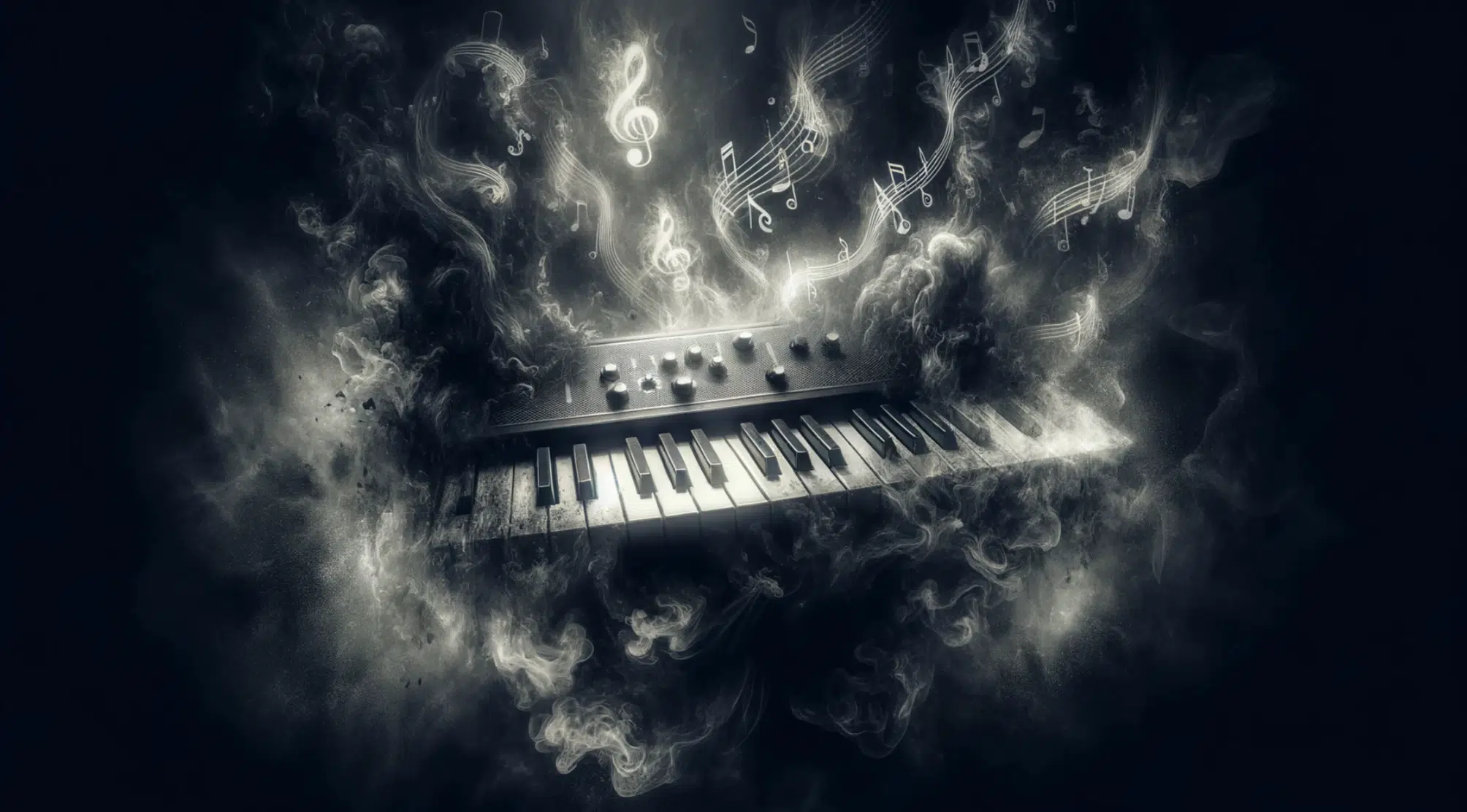
Understanding and using mysterious (dark) chord progressions can transform a simple track into an irresistible masterpiece.
They carry the power to evoke deep emotions and a tonal center that draws listeners into a haunting soundscape, transports them to cloud 9, or somewhere in the middle.
The trick lies in knowing how to utilize these progressions effectively like a pro, which is exactly what we’re helping with today.
Understanding the Basics
Before we dive into the actual dark chord progressions, let’s quickly recap the basics. They’re going to be your foundational blocks, so it’s super important you have a grasp on things like major chords, minor chords, scales, etc. So, let’s break it down.
-
Chords and Progressions: Building Blocks of Musical Emotion
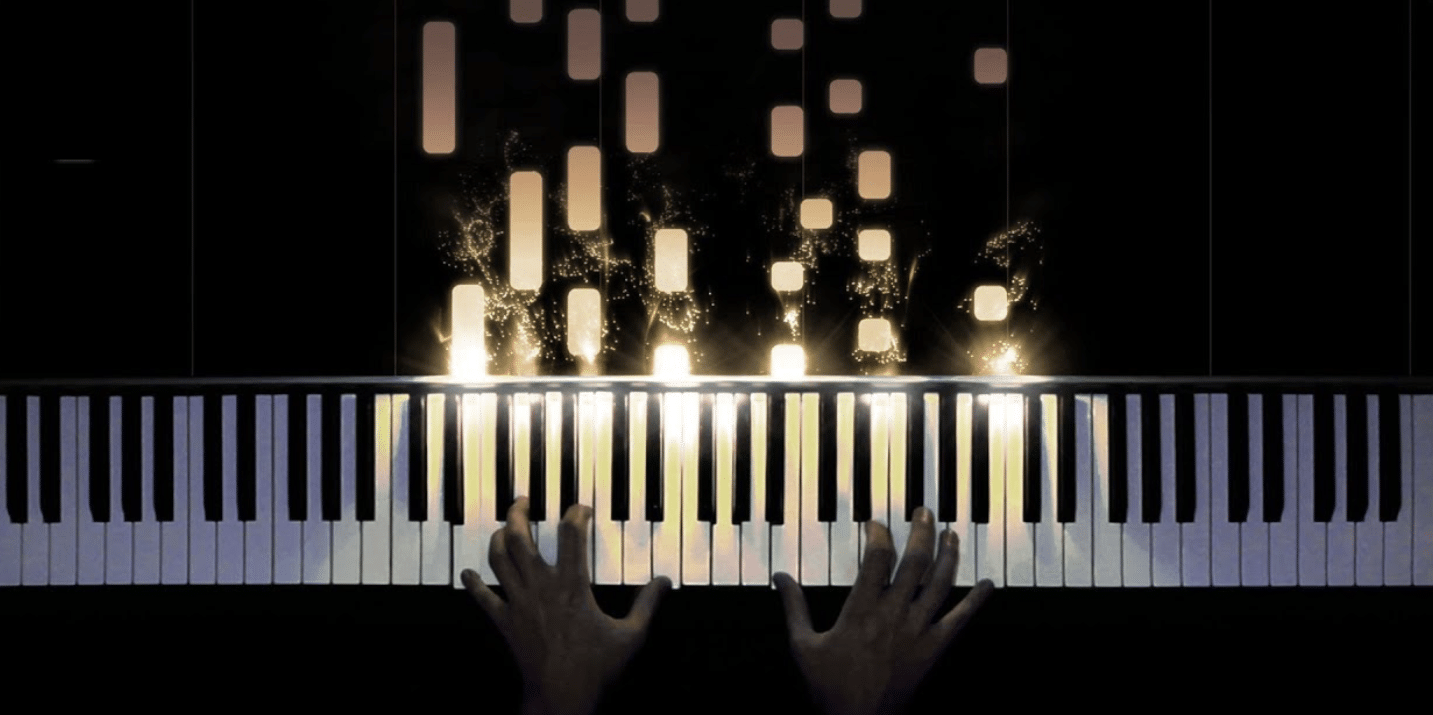
Chords are a group of notes played together to create a beautiful harmony.
When these chords are played in a sequence, they form a chord progression, which is fundamental in setting the overall mood of your track.
The choice between minor chords (known for their somber quality) and major chords (which often convey a sense of happiness) sets the initial tone of the music.
Chord progressions tell a story 一 moving the listener through different emotions and feelings, so it can make or break the entire vibe.
Creating relatable, unforgettable music doesn’t just depend on the choice of individual chords, but in how they are sequenced as well.
It’s all about building:
- Tension
- Release
- Anticipation
- Resolution
For producers like us, understanding the emotional (chemical) impact of different chord progressions is key.
Just remember, whether you’re shooting for an uplifting EDM melody or a mysterious atmosphere, the chord progression you choose influences everything.
-
Minor Chords
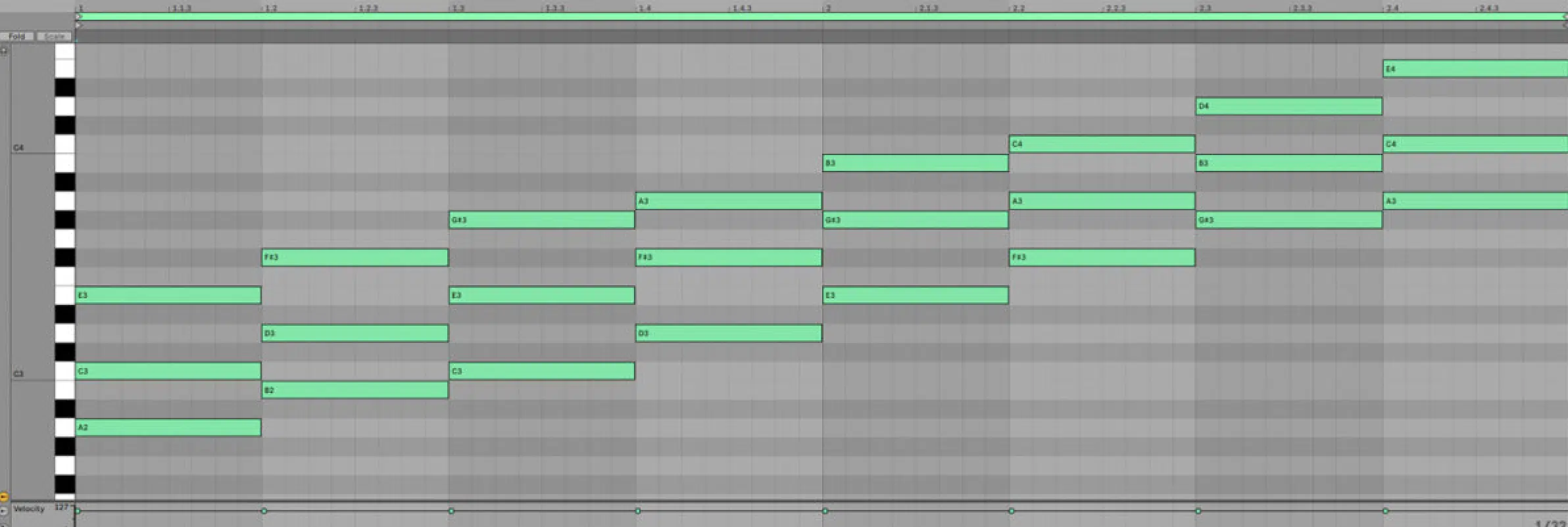
Minor chords are characterized by a combination of three notes that include a:
- Root note
- Minor third
- Perfect fifth
For example, an A minor chord (Am), which is built from the notes A, C, and E.
The interval between A and C is a minor third (three semitones), and the interval between A and E is a perfect fifth (seven semitones).
This configuration gives the Am chord its signature sorrowful and introspective sound, much different from its major counterpart.
The use of minor chords can dramatically affect the mood of a piece.
In a chord progression, transitioning from an E minor chord (Em) to an Am chord can deepen the atmosphere and create a more somber, contemplative mood.
This transition works well because both chords share common tones (E and G), making the movement feel natural yet emotionally charged.
Minor chords are not just about creating a sad or somber mood 一 they can also add complexity and depth to your song.
For instance, moving from a D minor chord (Dm) to an Am chord introduces a smooth, descending feeling.
This is perfect for verses or bridge sections of songs where you want to pull listeners into a deeper state of reflection.
This effect is achieved through the shared note (A), which serves as a pivot between the two chords, highlighting the minor quality and emotional depth they can bring to music.
-
Major Chords
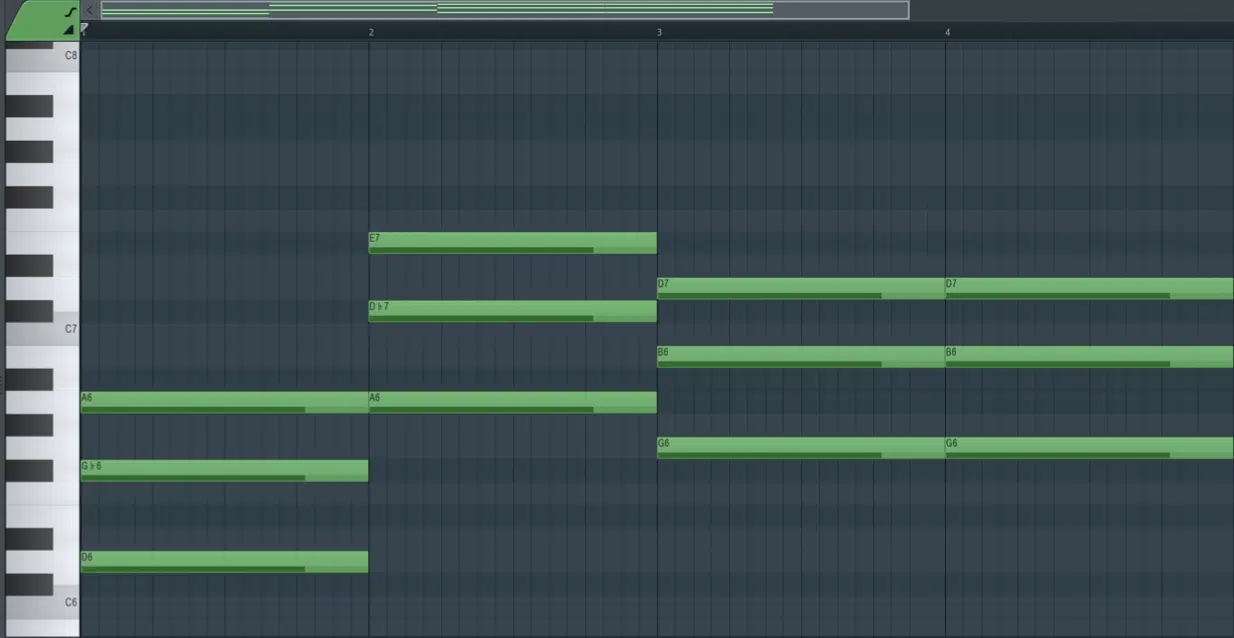
Major chords, on the other hand, consist of a:
- Root note
- Major third
- Perfect fifth
The C major chord (C) for example is made up of the notes C, E, and G.
The distance between C and E is a major third (four semitones), and the distance from C to G is a perfect fifth (seven semitones).
This creates a sound that’s often perceived as happy or bright compared to the minor chord’s sadness.
An example of a chord progression that reflects the uplifting quality of major chords could be moving from a G major chord (G) to a C major chord (C).
This chord progression feels resolved and uplifting, which makes it a staple in so many popular songs from your favorite artists.
It effectively utilizes the common tone (G) and the whole step movement from B (the third of the G chord) to C, to create a sense of completion and happiness.
Incorporating major chords into a progression can add a sense of contrast and brightness.
For example, following an Am chord with an F major chord (F) introduces a lightness and a lift, thanks to the shift from the minor to the major mood.
The F major chord, comprised of the notes F, A, and C, brings warmth and brightness 一 offering a moment of hope within a darker musical context.
This interplay between major chords and minor chords can be used creatively to travel through different emotional landscapes within a track, so always experiment.
12 Mysterious Chord Progressions That Will Give Your Tracks an Edge
Now that we’ve covered the basics, let’s dive into the 12 best mysterious chord progressions to help your songs have that eerie, dark vibe. They can help open up a world of emotional depth for your next haunting masterpiece.
#1. The Haunting Minor Progression
A classic example that really captures the essence of mystery in music is the i – VI – III – VII chord progression in a minor key.
For instance, in A minor, this progression would be Am – F – C – G.
What makes this chord progression so compelling is its journey through minor and major chords within the minor key.
Meaning, it creates a sense of unresolved tension and gloom that people really cling to and respond to.
The transition from Am to F introduces a somber mood, which is slightly lifted by the C major chord, only to be pulled back into the shadows by the G major chord, leading back to Am.
This circular movement creates an endless loop of longing and unresolved tension, which is perfect for evoking a sense of mystery and darkness.
#2. The Eb Minor Lament
The Eb minor key is known for it’s contemplative feel, which is perfect for that dark sound you’re trying to convey.
A great example of this beautifully broken chord progression is the i – iv – VII – III progression (Ebm – Abm – Db – Gb) in Eb minor chord.
This chord progression stands out for its deep, reflective journey which:
- Starts with the dark Ebm
- Then, moves through the melancholic Abm
- Reaches for the brightness of Db
- Finally, rests on Gb
This offers a tiny hope of resolution while maintaining the overall sadder mood.
This lament carries a heavy emotional weight, perfect for songs that explore themes of loss, longing, devastation, or introspection.
#3. The Diminished Descent
When you use diminished chords in a progression, you can instantly hear that it adds tension and an eerie sense of foreboding.
This, of course, makes it perfect for when you want to create a mysterious, alluring sound.
A captivating progression might be i – iv – ii° – VII in a minor key, such as Cm – Fm – G° – Bb in C minor.
The inclusion of G° (G diminished chord), built from the notes G, Bb, and Db, introduces a chilling twist between the melancholic Fm and the more resolved Bb.
One this is completely filled with suspense and uncertainty.
This descent through the diminished chord injects a dark, unsettling feel 一 perfect for moments requiring tension and intrigue.
Whether this is your first chord progression or your millionth, there is something special about a diminished chord, especially for this setting.
#4. The Harmonic Minor Ascension
Using the harmonic minor scale can help you create a deeply haunting character as well.
A chord progression such as i – V – VI – iv in the harmonic minor scale, for example, in A minor is:
- Amin
- Emaj
- Fmaj
- Dmin
It capitalizes on the exotic and tense resolution from the V (Emaj) back to the i (Amin), thanks to the raised seventh note characteristic of the harmonic minor scale.
This sequence creates an ascending feel that is both uplifting and packed with an underlying of sorrow 一 ideal for a mysterious vibe (Kendrick loves this one).
Side note, side from mysterious chord progressions, if you’d like to learn all about the harmonic minor scale or find the best sounds in this scale, we’ve got you covered.
#5. The Major Third Surprise
Incorporating a major third into a predominantly minor chord progression can create an unexpected lift that adds complexity and depth.
For instance, a first progression like i – III – iv – VI in a minor key, such as Cm – Eb – Fm – Ab in C minor, shows how the major third chord (Eb minor chord in this case) can add a surprising twist.
This chord brightens the mood momentarily 一 providing a great contrast to the darker minor chords before settling into the more neutral Ab.
The major third surprise offers a fleeting glimpse of hope or light in an otherwise dark progression.
You’ll hear this kind of sound in a lot of Britney Spears, Billie Eilish, and Ariana Grande songs, respectively.
#6. The Eb Minor to Major Lift
Transitioning from a minor chord to its major counterpart within the same root note creates a profound emotional impact.
In the Eb minor chord, a progression such as i – VI – III – iM, which translates to Ebm – Cb – Gb – EbM, displays this perfectly.
The final shift to EbM (E flat Major) brings an unexpected resolution and warmth.
That E flat Major turns the deep, dark sadness of the minor key into something more hopeful and uplifting, even if just for a moment.
This progression technique can be particularly powerful for when you want to create a dramatic shift in the mood of your sound.
Side note, there’s an excellent music production book that breaks down all these music theory essentials.
#7. The Suspense of Sus Chords
Suspended (sus) chords remove or delay the resolution of a chord by replacing the third with either a second (sus2) or a fourth (sus4).
It creates a sense of anticipation or suspense before resolving to a major or minor chord.
A chord progression that beautifully incorporates this feeling is I – IV – V – Vsus4 – V in a major key, such as G – C – D – Dsus4 – D in G major.
The Dsus4 chord, made from the three notes D, G, and A, introduces a suspenseful lift before settling back into the definitive D major chord.
This is excellent for creating moments of tension that resolve satisfyingly 一 making it perfect for both introspective verses and dramatic choruses.
#8. The Chromatic Intrigue
Chromatic movements within a chord progression can introduce a mystifying and complex quality to your music.
A progression like i – bVI – iv – iv# in a minor key, for instance, Cm – Ab – Fm – F#m in C minor, utilizes a chromatic movement step between the Fm and F#m chords.
This half-step movement creates a sense of unease and dark curiosity 一 perfect for mysterious or thriller-inspired songs.
The inclusion of chromaticism adds a layer of unpredictability which engages the listener’s ear in a unique (and resonant) way.
If you’d like to learn all about the chromatic scale, look no further.
#9. The Minor Plagal Cadence
The minor plagal cadence, often referred to as the “Amen Cadence,” traditionally moves from the IV to the I chord in a major key but with a twist when used in a minor context.
For example, in A minor, the chord progression would be Dm – Am, which creates a more subdued conclusion to a phrase.
The beauty of this cadence lies in its:
- Simplicity
- Emotional depth
- Ability to evoke a sense of seriousness & reflection
It’s super effective in closing sections of a song 一 leaving the listener with a lingering sense of introspection.
This way, they’ll really remember your songs/sounds and always want more.
#10. The Augmented Reality
Augmented chords, built by raising the fifth of a major triad by a half-step, offer a dissonant and unresolved sound that can add tension and an otherworldly feel to music.
A progression that uses this to great effect is I – III+ – vi – IV, such as (in C major scale):
- C
- E+
- Am
- F
The E+ chord, consisting of E, G#, and B#, adds an unexpected twist 一 pulling the ear towards a resolution that feels both urgent and intriguing.
This “augmented reality” brings a sense of drama and intensity.
So, an augmented chord is perfect for bringing strong emotions or when you want to create climactic moments in your songs.
#11. The Tonic Minor Twist
Introducing a minor chord as the tonic in an otherwise major progression creates a hypnotic twist that everyone likes to hear.
For example, the chord progression IV – V – I – i in a key like G major (translating to C – D – G – Gm) ends on a sadder note with the Gm chord.
This final move to the minor tonic introduces a surprising shift in mood, from the expected resolution of G major to a darker, more reflective G minor.
It’s awesome for adding depth to your sound, suggesting an underlying complexity or bittersweet ending.
#12. The Melodic Minor Vibe
The melodic minor scale (different from the natural minor scale) offers unique harmonic possibilities due to its ascending and descending forms.
A progression like i – IV – V – VII in melodic minor, such as Am – Dm – E – G in A melodic minor, combines the melancholy of minor chords with the elevating effect of the leading tone in the V chord and VII chords.
This results in a super emotional sound that’s both introspective and hopeful.
The use of the melodic minor scale adds a layer of emotion which is perfect for creating songs with a dark, evocative atmosphere.
Bonus: Advanced Techniques and Tips for Incorporating Mysterious/Dark Chord Progressions in Your Tracks
To top off this article, here are a few advanced techniques and tips for incorporating that dark feel into your music.
- Modulation
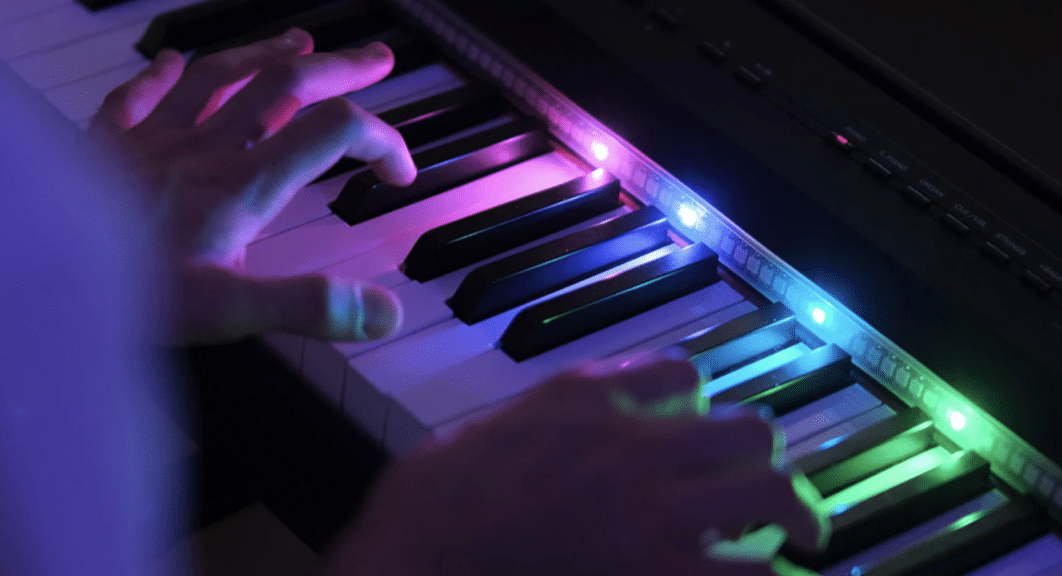
Shifting from one key to another key within a piece can dramatically alter its emotional soundscape.
For instance, by modulating from a section in a minor key to a relative major key, you will hear it gives a temporary lift or resolution.
This enhances the overall texture of your sounds.
‘
Therefore, it lets you play with your listeners’ emotions and guide them through a dynamic sonic journey.
- Texture and Timbre
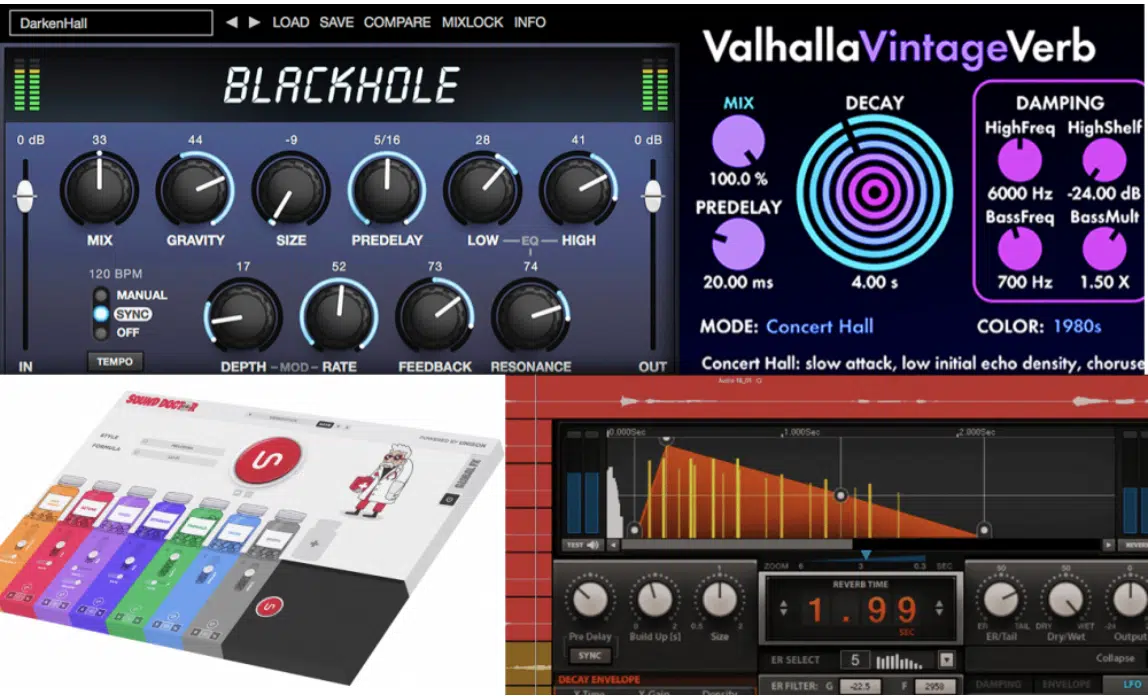
The choice of instruments and their timbre can significantly influence the mood your mysterious chord progressions evoke.
For a mysterious sound try using instruments with a naturally haunting or ethereal sound, such as a string section with a lot of reverb, or a mellotron choir.
Experiment with layering sounds and using effects to create a unique texture that complements the dark or mysterious mood you’re aiming for.
- Melodies and Harmonies
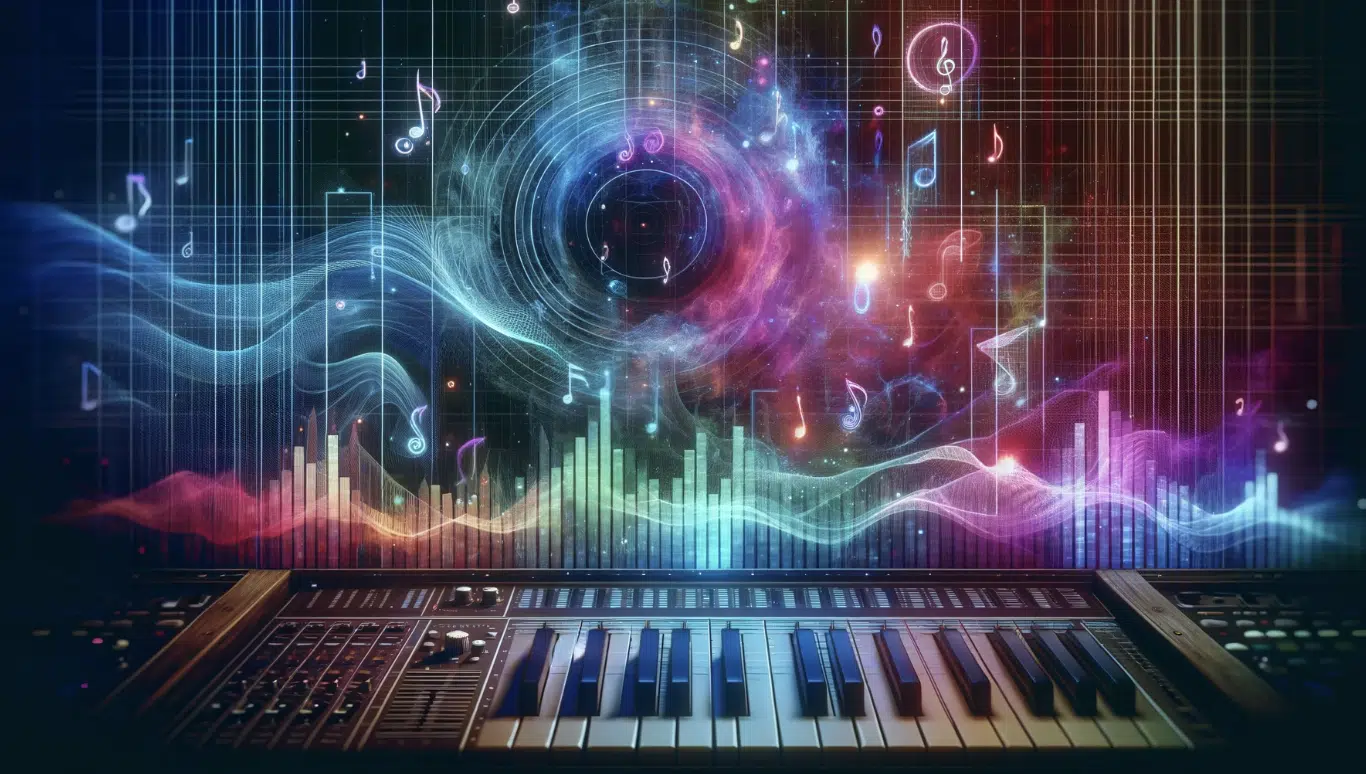
While chord progressions lay the foundation, the melody and harmonies you choose can enhance the mysterious or dark vibe of your track.
Use dissonant intervals, such as minor seconds or tritones, within your melodies or harmonies to add tension and create super intriguing combinations.
Pro Tip: To understand the foundation of a harmony it’s important to know about traids.
For example, a C major triad is a chord built from the root note C, the major third E, and the perfect fifth G 一 it’s pretty much the epitome of clarity and brightness.
On the other hand, a minor triad, such as an A minor triad, involves flattening the third note.
Therefore, it creates a chord built from A, C, and E, which introduces a sense of desolation or introspection into your first progression.
Knowing about triads will help enhance your production skills as a whole and understand theory a little better.
Mysterious Chord Progressions: Final Thoughts
Mysterious chord progressions can be your secret weapon for adding depth and intrigue to your tracks.
They’re great for setting a mood that can pull listeners into your music and make them feel a whole range of deeper, darker emotions.
And when you get creative with the progressions we talked about, you can really make your music stand out 一 giving it a unique vibe that catches people’s attention.
To perfectly compliment these mysterious chord progressions, don’t forget to check out the super popular Free Dark Hip Hop Sample Pack.
It comes packed with over 60 free dark hip-hop samples, loops, and MIDIs.
These sounds take inspiration from big names like Drake, 21 Savage, and Young Thug, helping you add that dark, professional touch to your beats.
Remember, it’s all about experimenting with these mysterious chord progressions, trying new things, and seeing how you can make your music shine over the competition.
Until next time…







Leave a Reply
You must belogged in to post a comment.